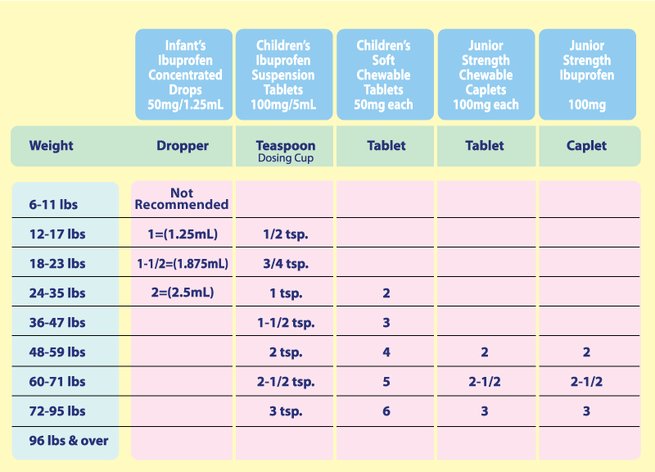

Best Practices: How Often To Give Tylenol And Motrin
Wondering how often to give Tylenol and Motrin to your little one? Finding the right balance between these two common over-the-counter medications can be crucial when dealing with children’s fevers or pain. Both Tylenol and Motrin can be effective in reducing fever and alleviating discomfort, but it’s essential to know the correct dosages and timing for each. Let’s explore the best practices for administering these medications to ensure your child’s well-being and comfort.
How Often to Give Tylenol and Motrin: A Parent’s Guide
Welcome, parents! If you’ve ever found yourself wondering about the best way to manage your child’s fever or pain, you’re in the right place. In this comprehensive guide, we’ll explore the importance of knowing how often to give Tylenol and Motrin to your little ones. Let’s dive in!
The Basics: Tylenol vs. Motrin
Before we delve into the dosing schedules, let’s differentiate between Tylenol (acetaminophen) and Motrin (ibuprofen). These are common over-the-counter medications used to reduce fever and relieve minor aches and pains. While both are effective in managing symptoms, it’s essential to understand when to use each one.
When to Use Tylenol:
Tylenol is typically recommended for reducing fever or relieving pain in children. It is gentle on the stomach and is suitable for kids who may have stomach sensitivity to other medications. Tylenol is also a go-to option for infants under six months old.
When to Use Motrin:
Motrin, on the other hand, is an NSAID (nonsteroidal anti-inflammatory drug) that can help reduce inflammation in addition to fever and pain. It’s ideal for older children and those with conditions like swelling or muscle pain. However, Motrin should not be given to infants under six months without a doctor’s approval.
Understanding Dosage Guidelines
When it comes to administering Tylenol or Motrin to your child, following the correct dosage guidelines is crucial. Giving too little may not provide adequate relief, while giving too much can be harmful. Always consult with your child’s pediatrician before starting any new medication regimen.
Dosing by Weight
Many medications are dosed based on a child’s weight rather than age. This ensures that the dosage is tailored to your child’s specific needs. Always use an updated weight and age chart to determine the correct dosage for your little one.
Timing Between Doses
One common question parents have is how often to give Tylenol and Motrin without overlapping doses. It’s crucial to space out the administration of these medications to avoid accidental overdosing. Typically, you should wait at least four hours between doses of Tylenol and six hours between doses of Motrin.
Creating a Dosage Schedule
Establishing a consistent dosing schedule can help you stay organized and ensure your child receives the right amount of medication at the right times. Here’s a simple guide to help you create a dosage schedule for Tylenol and Motrin:
Step 1: Consult Your Pediatrician
Before starting any new medication regimen, consult with your child’s pediatrician. They can provide personalized recommendations based on your child’s health history and current condition.
Step 2: Record Symptoms and Temperatures
Keep a log of your child’s symptoms and temperatures to track their progress. This information can help your pediatrician make informed decisions about dosage adjustments if necessary.
Step 3: Set Reminder Alarms
With busy schedules, it’s easy to forget when it’s time for the next dose. Set reminder alarms on your phone or use a medication tracking app to stay on top of the dosing schedule.
Step 4: Monitor Side Effects
While Tylenol and Motrin are generally safe when used as directed, it’s essential to watch for any potential side effects. Contact your pediatrician immediately if you notice any adverse reactions in your child.
As a parent, knowing how often to give Tylenol and Motrin to your child can be a game-changer in managing their fever and discomfort. By understanding the differences between the two medications, following proper dosing guidelines, and creating a dosage schedule, you can ensure your child receives the care they need.
Remember, your child’s health is a top priority, so never hesitate to reach out to your pediatrician with any questions or concerns. With the right knowledge and proactive approach, you can help your little one feel better in no time. Stay informed, stay vigilant, and most importantly, stay ready to handle whatever comes your way!
Where to Turn for Pain Relief or Inflammation (Aleve, Motrin, Advil, Tylenol) Dr. Mandell
Frequently Asked Questions
How should I alternate giving Tylenol and Motrin to my child?
When managing a child’s fever or pain with Tylenol (acetaminophen) and Motrin (ibuprofen), it’s important to follow the dosing instructions provided by your healthcare provider. Typically, you can alternate between the two medications every 3-4 hours, making sure not to exceed the maximum daily dose for each. Always double-check the correct dosage based on your child’s weight and age to avoid any potential complications.
What is the recommended frequency for administering Tylenol and Motrin to a child?
The frequency of giving Tylenol and Motrin to a child depends on the specific dosing instructions provided by your child’s healthcare provider. Generally, these medications can be given every 6-8 hours, but it’s crucial to consult with a healthcare professional to determine the appropriate timing for your child’s specific condition and age. Never exceed the recommended dosage or frequency without proper guidance.
Can I give Tylenol and Motrin simultaneously to my child?
It is not recommended to give Tylenol and Motrin simultaneously to a child unless advised by a healthcare provider. These medications work differently and have the potential to interact adversely when administered together. Alternating between Tylenol and Motrin at appropriate intervals is a safer and more effective approach to managing your child’s fever or pain.
Final Thoughts
It is important to administer Tylenol and Motrin as directed by the healthcare provider. Typically, Tylenol can be given every 4-6 hours and Motrin every 6-8 hours. Ensuring the correct dosage and frequency of these medications is crucial for effective pain or fever management. Always consult a healthcare professional for specific guidance on how often to give Tylenol and Motrin to avoid any potential risks or complications.


